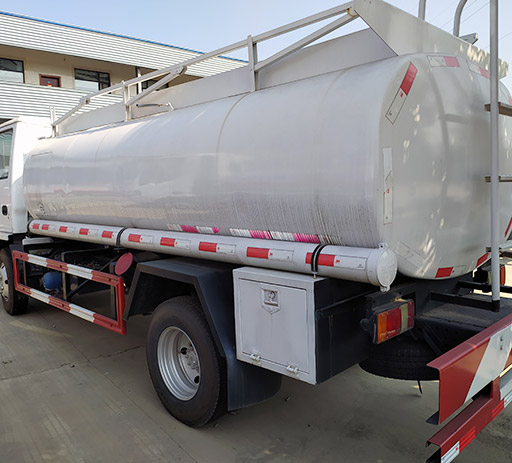How Much Concrete Does a Truck Hold? Everything You Need to Know

When it comes to construction projects, understanding the capacity of a concrete truck is essential for efficient planning and execution. Whether you are a contractor, a DIY enthusiast, or a homeowner supervising a construction project, knowing how much concrete a truck can hold will directly impact your project’s success. In this article, we will delve into the details of concrete trucks and provide vital information to help you navigate your concrete needs.
Understanding Concrete Truck Capacity
Concrete trucks come in various sizes and configurations, and their capacity can vary greatly depending on several factors. The capacity generally refers to the volume of concrete the truck can carry from the batch plant to the job site, defined in cubic yards or cubic meters.
Types of Concrete Trucks
To understand how much concrete a truck holds, it’s essential to know the different types of concrete trucks available:
1. Standard Mixer Trucks
Standard mixer trucks, also known as drum mixers, are the most common type used in construction. They typically have a drum that rotates to keep the concrete agitated. The capacity of these trucks generally ranges from:
| Truck Type | Capacity (Cubic Yards) | Capacity (Cubic Meters) |
|---|---|---|
| Standard Mixer | 8 – 10 | 6 – 7.5 |
2. Shrink-Mixed Truck
Shrink-mixed trucks carry partially mixed concrete that gets mixed further during transportation. These trucks usually have a capacity of:
| Shrink-Mixed Truck | 8 – 12 | 6 – 9 |
3. Volumetric Mixer Trucks
Volumetric mixer trucks allow for precise material measurement and mixing on-site. Their capacities can vary significantly, ranging from:
| Volumetric Mixer Truck | 8 – 12 | 6 – 9 |
Factors Affecting Concrete Volume
The amount of concrete a truck can hold can be influenced by several factors:
1. Truck Size and Specifications

Concrete trucks come in various specifications. The size you choose will depend on the scale of your project. Large trucks are beneficial for more extensive jobs, while smaller trucks are ideal for residential projects.
2. Load Limits
Regulations regarding weight limits for vehicles on public roads can restrict the amount of concrete a truck can carry. For instance, the maximum weight for a typical concrete truck—including concrete, the truck, and any additional equipment—must comply with the legal limits set by state or federal laws.
3. Type of Concrete Mix
The density of the concrete mix also plays a role. Heavier mixes may limit the total volume a truck can carry due to weight constraints.
Calculating Concrete Needs for Your Project
To ensure you order the right amount of concrete, you need to calculate the volume required for your specific project. Here’s how to do it:
Step-by-Step Calculation
1. Measure the Area
Use the following formula based on the shape of your area:
- For a rectangular slab: Length x Width x Depth
- For a cylindrical shape: πr²h
2. Convert to Cubic Yards
If your measurements are in feet, convert to cubic yards by dividing the cubic feet by 27.
3. Add Extra Concrete
It’s always wise to order about 10% more concrete than calculated to account for spillage, over-excavation, and changes in the project scope.
Example Calculation
Let’s say you want to pour a 4-inch thick concrete slab measuring 10 feet by 10 feet. Here’s the calculation:
- Volume in cubic feet: 10ft x 10ft x (4in/12) = 33.33 cubic feet
- Convert to cubic yards: 33.33 / 27 = 1.24 cubic yards
- Add 10% extra: 1.24 x 1.10 = 1.36 cubic yards
In this case, you would order approximately 1.4 cubic yards of concrete.
Ordering Concrete for Your Project
When ordering concrete, it’s crucial to communicate clearly with your supplier. Here are some tips:
Choosing a Concrete Supplier
Look for local suppliers with a good reputation for quality and timeliness. Ask for recommendations or check online reviews.
Placing Your Order
When you place your order, provide the following:
- The type of mix required (standard, high-strength, etc.)
- Your calculated volume, including extra
- Delivery date and time
- The job site location and contact information
Concrete Delivery Process
Understanding the delivery process can help minimize complications on-site:
Timing and Scheduling
Ensure you coordinate the delivery time with your excavation schedule. Concrete should be poured as soon as possible after mixing to prevent it from hardening.
Access for the Truck
Make sure there is adequate access for the truck to deliver concrete. This includes checking for any obstacles like low tree branches or narrow pathways that could impede the truck’s movement.

Practical Tips for Working with Concrete

1. Site Preparation
Prepare the site well in advance of the concrete delivery. Minimize the possibility of mud and ensure the area is level.
2. Reinforcement Options
Consider using reinforcement such as rebar or wire mesh to enhance the strength of your concrete slab.
3. Curing the Concrete
Properly cure the concrete to achieve the desired strength. This may involve wetting the surface or using curing compounds.
Frequently Asked Questions (FAQ)
1. How many cubic yards of concrete does a full truck hold?
A full concrete truck generally holds between 8 to 12 cubic yards of concrete, depending on the truck type and specifications.
2. What is the average weight of a cubic yard of concrete?
The average weight of a cubic yard of concrete is about 4,000 pounds, but this can vary based on the mix used.
3. Can I order half loads of concrete?
Many suppliers do offer half loads, but you should confirm this with your specific supplier, as surcharges may apply.
4. How long does it take for the concrete to set?
Concrete typically starts to set within 30 minutes to an hour, and can take several days to cure fully.
5. What factors can affect the curing time of concrete?
Temperature, humidity, wind, and the type of mix can all affect the curing time of concrete.
6. Is it better to buy more concrete than I need?
Yes, it’s advisable to order about 10% more than your calculations to account for spillage, imperfections, and changes during the project.
